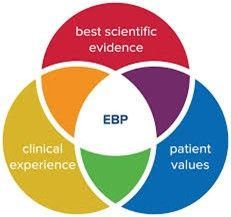Action-Based Outcomes: Quality over Quantity
Everyone wants outcomes. Employers and payors want them to see if the money they’re paying for behavioral health treatment results in client improvement. Organizations want them to look at the quality of the work they do and to satisfy those payors. And the professional, the clinician wants to ensure they do good work, not only because it is personally satisfying because it brings job security.
But how does an agency measure outcomes? An outcome is merely one measure of quality for an agency and a client. Choosing the right outcome measure makes a difference, yet different sources have different types of outcomes, which makes it difficult to please them. What is the best way to do so?
Here two examples of outcomes used by behavioral health organizations:
1. Quantity-based outcomes tell an agency how their client is doing compared to a standardized testing instrument. Because these measurements are validated and found reliable over years of testing, they have a high degree of confidence in predicting results. The CANS, PTSD-RI, Pediatric Symptom Checklist, and others offer this way of showing how a client does in improving their functioning. However, it still only looks at the behaviors based on how someone else measures them. Most measurement tests are conducted by a professional, a parent, or another third party who gives their subjective (and hopefully accurate) view of how a client does over some time. Yet it has its limitations due to the possibly slanted perspective.
2. Action-based outcomes. If a youth is told to clean their room, how they respond to the situation shows the behavior exhibited. If they don’t talk about their feelings when they argue with others, the youth demonstrates their problems with communication. These behaviors and functioning are outcome measures that test real behaviors. Unlike the other measurements above, which can be qualitative (or based on opinion), action-based outcomes are quantitative. A youth who hits the wall five times per day tells the clinician the frequency of the behavior, but not the trigger or cause of the behavior. When asking the youth about vignettes or situations that require action, the youth provides data about the situations and how they respond.
Reducing behavior is more about helping the youth manage their stress, their communication skills, and their self-regulation. Learning more about how they handle themselves in real-life situations, which provide quality information, leads to improved outcomes.
Apogee, Praxes’ treatment intervention platform, generates interventions that lead to positive behaviors and quantifiable outcomes.
For more information on a free trial for Apogee, please contact us.




